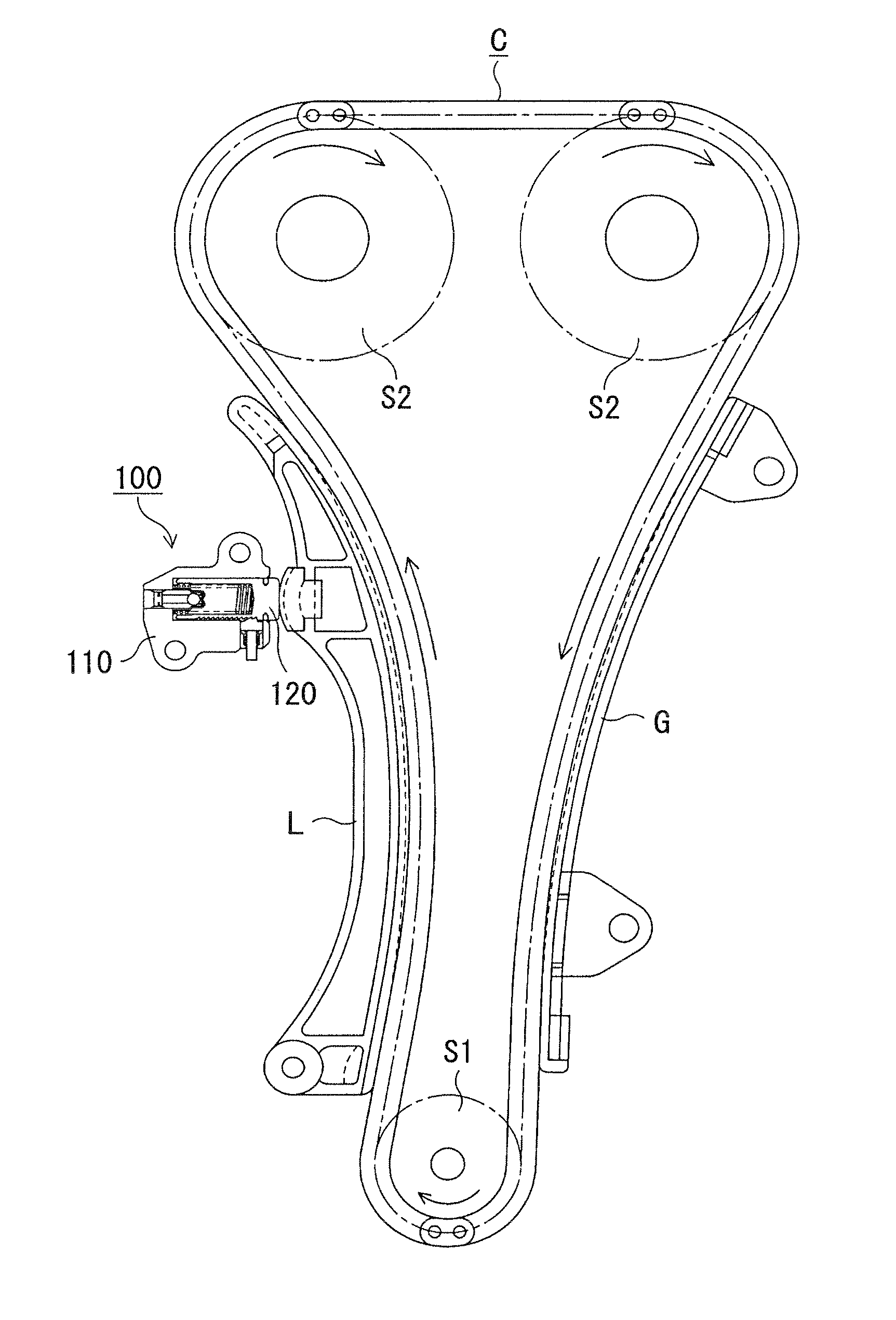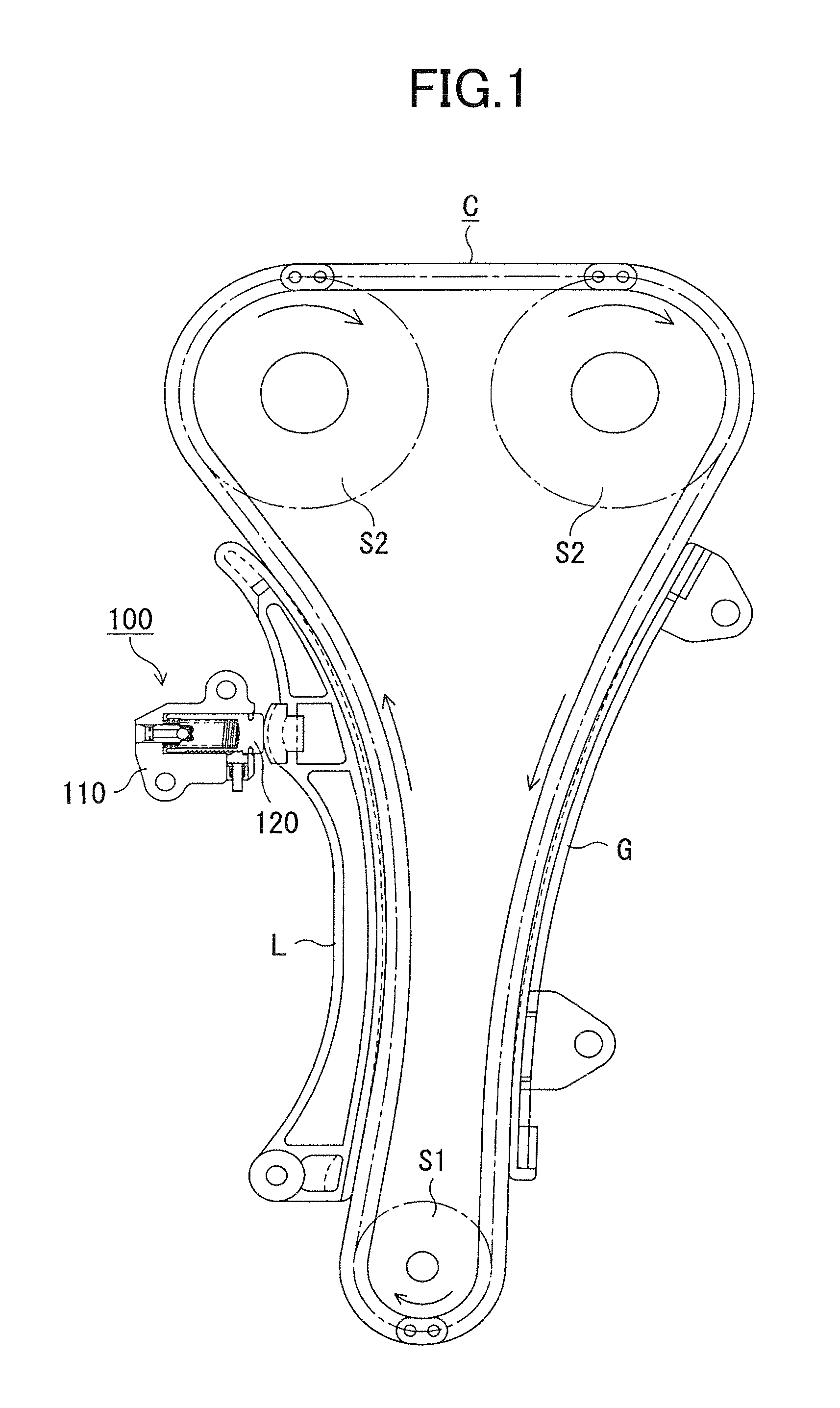Ratchet-type tensioner
a tensioner and ratchet technology, applied in the direction of belts/chains/gearings, mechanical equipment, belts/chains/gearings, etc., can solve the problems of excessive chain strain, restrict the retracting movement of the plunger, increase the noise generated by the chain as it travels, etc., to reduce the flapping noise generated by the timing chain, reduce backlash, and high load
- Summary
- Abstract
- Description
- Claims
- Application Information
AI Technical Summary
Benefits of technology
Problems solved by technology
Method used
Image
Examples
Embodiment Construction
[0025]As shown in FIG. 1, a ratchet-type tensioner 100 is attached to an engine block (not shown) on the slack side of a timing chain C driving by a crankshaft sprocket S1 and driving camshaft sprockets S2. A plunger 120, protruding from the tensioner housing 110, is movable in and out of the tensioner housing toward the chain, and applies tension to the slack side of the chain through a lever L pivotably supported on the engine block by pressing the back of the lever at a location remote from the lever's pivot axis.
[0026]A stationary guide G for guiding the travel of the timing chain is fixed to the engine block on the tension side of the chain.
[0027]The chain transmits rotation from sprocket Si to sprockets S2, and the directions of the sprocket rotation and chain travel are indicated in FIG. 1 by arrows.
[0028]As shown in FIG. 2, tensioner 100 has a housing 110 having an oil supply passage 111 for introducing oil under pressure from an external supply, usually through a port in th...
PUM
 Login to View More
Login to View More Abstract
Description
Claims
Application Information
 Login to View More
Login to View More - R&D
- Intellectual Property
- Life Sciences
- Materials
- Tech Scout
- Unparalleled Data Quality
- Higher Quality Content
- 60% Fewer Hallucinations
Browse by: Latest US Patents, China's latest patents, Technical Efficacy Thesaurus, Application Domain, Technology Topic, Popular Technical Reports.
© 2025 PatSnap. All rights reserved.Legal|Privacy policy|Modern Slavery Act Transparency Statement|Sitemap|About US| Contact US: help@patsnap.com



